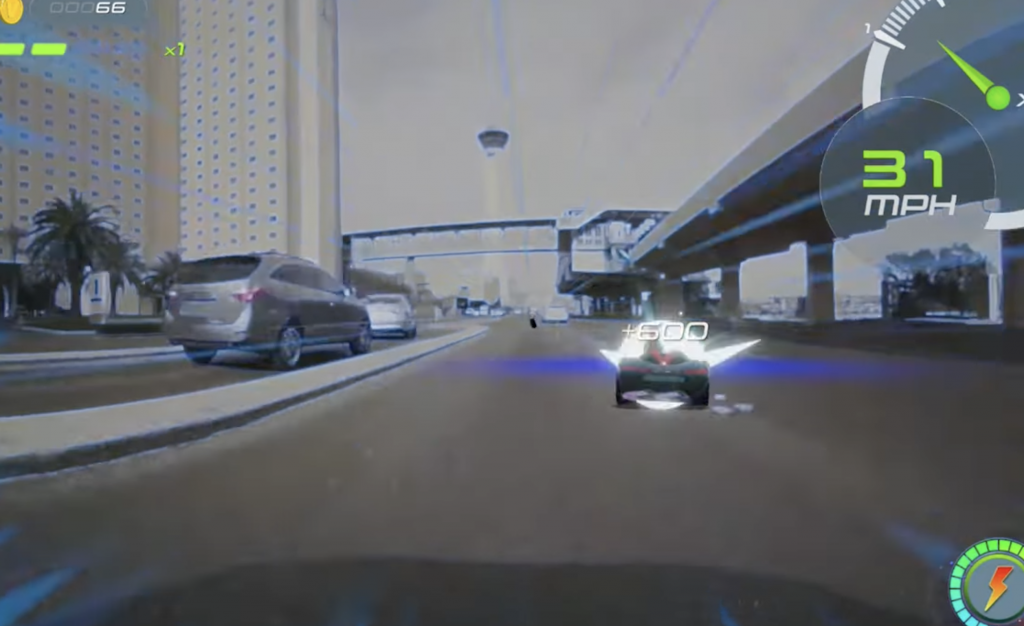As cars become increasingly automated and connected, it only follows that in-car entertainment will evolve dramatically. Think: high-tech and immersive video games, or projectors beaming in virtual passengers on a real road trip.
Recently, Axios took a ride on Valeo Racer, a new extended-reality racing video game developed by French automotive supplier Valeo. This innovative game, which was unveiled at this year’s SXSW, turned a Volvo XC90 into a real-time participant in the video game, using the world around it as a digital racetrack. With a video game controller, the user navigates an animated race car in and out of real traffic, collecting coins and avoiding obstacles like traffic cones or stray tires.
Valeo Racer: Autonomous Driving Meets Gaming
From Valeo: “Valeo Racer is the first extended reality video game to combine live video and world perception of the real environment with digital gaming elements. “The ‘infinite runner’ game is generated by a software stack developed by Valeo. It uses the vehicle’s existing Advanced Driving Assistance Systems (ADAS), including cameras, radar and ultrasonic sensors, and artificial intelligence perception algorithms to insert the car’s real-time environment data into Unity’s Runtime to generate game elements. ..rendering high-performance graphics, managing user input and interactions, coordinating game components, supporting real-time physics simulation, animation, scripting languages, asset management, and networking – all on the end device. The result allows passengers to play on their phone or tablet connected with in-vehicle wifi and even compete with each other during trips.”

The game is a collaboration between Valeo and gaming software developer Unity, generating 3D graphics and other game elements. Because it integrates digital elements into a live feed of the vehicle’s real surroundings, the gaming experience and challenges are different every time. Plus, players can even race against passengers in other real cars on the road.
Unity’s CTO Mark Whitten remarked: “We hope the unique experience developed with Valeo serves as a template for engineers and creators to think beyond the use of our technology for just safety, to ultimate passenger satisfaction – front seat and back.”
Imagining the possibilities of how we’ll be able to embrace emerging tech within self-driving cars is pretty exciting – from VR to AR to immersive sound and sleep environments, it’s a new industry waiting to launch in step with automated tech.
Here’s more on the experience:
What would you like to see in a self-driving car? Let us know in the comments.



